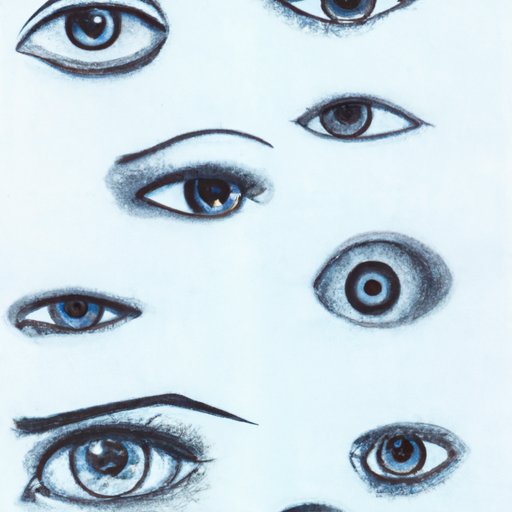How to Draw Eyes: A Comprehensive Guide for Artists
As an aspiring artist, you might have encountered difficulties when it comes to drawing eyes. The eyes are a prominent element in any portrait, and mastering each aspect will help you create realistic and captivating pieces of art. In this article, we will provide a comprehensive guide on how to draw eyes. We’ll break down the basic shapes, important details, and different mediums to help you experiment and develop your own drawing style.
Breaking down the basic shapes of an eye
When drawing an eye, it’s essential to begin by getting the basic shapes right. One of the most common eye shapes is almond-shaped, which consists of the iris, pupil, and eyelids. These shapes can be modified to create different kinds of eyes that vary in size, shape, and style. To get these shapes right, start by sketching the basic outline of the eye using a pencil.
When sketching, ensure that you maintain a proper proportion between the iris and the pupil. Additionally, the eyelids should be smooth and not distorted. For beginners, it’s essential to practice getting the basic shapes right before advancing to other details.
Identifying the light source
The light source is critical when drawing eyes as it helps to create depth and bring more realism to your portrait. For example, if the light source is coming from above, there will be a shadow under the upper lid. Similarly, if the light source is coming from the side, there will be a cast shadow on the opposite side of the eye.
Creating highlights and shadows in the right places will give your drawing a sense of depth and realism. Applying this technique correctly will make the eye look like it is popping out of the paper, making it more immersive.
Mastering the details of an eye
Paying attention to detail is crucial when drawing eyes as every tiny detail matters. For instance, eyelashes can create depth and texture, and the tear duct adds a sense of realism. When done correctly, the details will make the eye look more lively and captivating.
One of the most important aspects of creating realistic details in the eye is using the right pressure when drawing different details. For example, eyelashes and tear ducts require delicate and light strokes. In contrast, creases and wrinkles may need more pressure and strong strokes to create a bold and textured look.
Exploring different mediums
Artists have endless options when it comes to choosing a drawing medium. Each medium has its unique properties, allowing an artist to create unique pieces of art. Experimenting with different mediums such as pencil, charcoal, or watercolor will give you a different look, tone, and feel.
A great example of how various mediums can be used to create different styles of art is using pencil to create a sketchy and rough look. In contrast, watercolor gives a softer and more gentle feel, and charcoals create a textured and bold look.
Studying real eyes
One of the most effective ways to improve your skills in drawing eyes is by studying real eyes. Whether from photographs, life models, or other references, these resources will help you to observe and analyze different eye types. When studying real eyes, break down each element of the eye such as the iris, pupil, and eyelids.
Observing these elements will help you understand the subtle differences that exist, allowing you to create more detailed and realistic drawings. Also, studying real eyes enables you to experiment with different styles, enabling you to develop your own style or approach.
Practicing drawing eyes
Practice is essential when it comes to drawing eyes. It would help if you focused on specific elements of the eye, such as the eyelids or iris, and what they convey regarding mood or emotion. Consistent practice will help you improve your skills, enabling you to create more intricate, detailed, and realistic drawings.
It is also essential to remember that everyone has their unique way of drawing, and there is no right or wrong approach. The only way to improve is to keep practicing and pushing your limits.
Conclusion
Drawing eyes can be challenging, but with the right approach, it can be done. It all starts by breaking down the basics of an eye, identifying the light source, and mastering details. Experimenting with different mediums and studying real eyes can also help you improve your skills. Consistent practice and taking risks will help you develop a style that is unique to you. We hope that this article has provided a comprehensive guide on how to draw eyes, and we encourage you to go forth and create.
